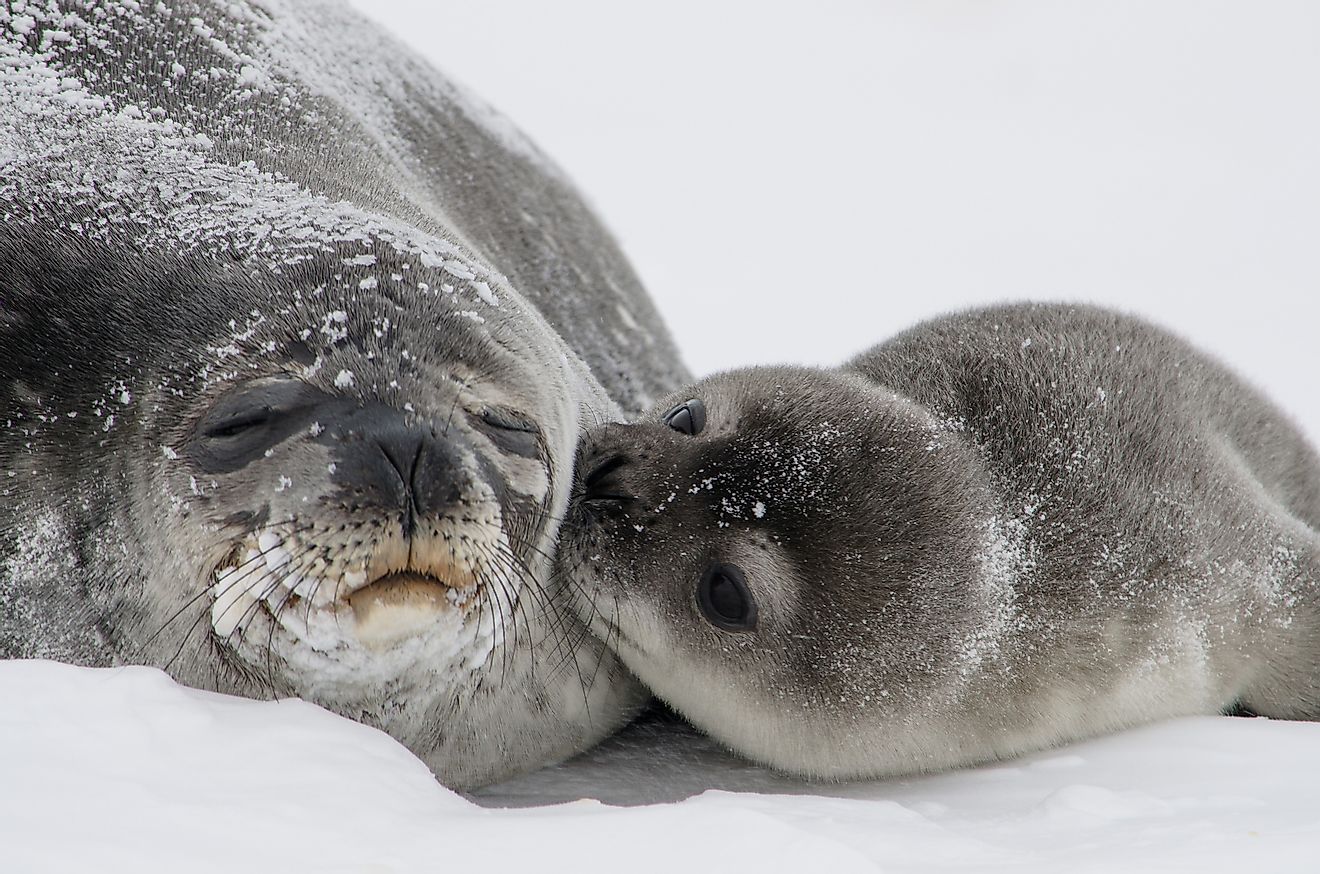Weddell Seal Facts: Animals of Antarctica

5. Physical Description
Scientifically named Leptonychotes weddellii after their discoverer, the British seal hunter and explorer James Weddell, the weddell seal is a relatively large and abundant seal in the Phocidae family of “true seals”, within the Class Mammalia and the order Carnivora. Fully grown Weddell seals have mottled sides and dark backs with white and mottled undersides. The head is generally small relative to the body size. Females are generally larger than males. While females can grow up to 10.8 feet (3.3 meters), males typically only grow to 9.5 feet (2.9 meters). However, male seals tend to have a broader head and a thicker neck compared to females. Their weights vary with seasons and at different stages of production, their weight range varies from 881 to 1,102 pounds (400-500 kilograms).
4. Diet
Weddell seals are carnivores. Their food can vary with their location and time but are limited mainly to bottom-dwelling fish, octopi, prawns, krill, and mid-water fish. A sedentary adult can eat about 22 lbs (10 kg) a day, while an active adult eats over 110 lbs (50 kg) daily. It is believed that Weddell seals rely mainly on eyesight and light to hunt for food. When searching for prey, Weddell seals can dive under water for about 45 minutes and reach depths of up to 787 yards (720 meters). They form lengthy shallow dives in search of new food sources.
3. Habitat and Range
Weddell seals are undeniably animals of the ice, tending to stay around “fast ice”, which is sea ice attached to the shore connecting two icebergs. They stay all around the Antarctic continent and its nearby islands, and may at times go further north in search of better food supplies and breeding grounds. They are actually known as the southern-most mammals in the world. Their total population is estimated to be between about 500,000- and 1 million-strong, though it is difficult to gauge their exact population size as they are circumpolar, and most of them live in the areas of pack ice not often frequented by human observers. Leopard seals and killer whales are their primary predators on pack ice or at sea, respectively. These threatening neighbors prey primarily on pups and juveniles, as they are easier to attain. Their southern-lying habitat makes them less susceptible to suffering from human activities and climate change than their far-northern counterparts, where climate change has been more profound. These animals are thriving, classified as an animal of “least concern” with an increasing population.
2. Behavior
Weddell seals are normally placid and sedentary animals. They can be easily approached without much stress to the animal. When they dive, they prefer to remain close to their access holes on top of the ice. They live in packs and when underwater remain close to their breeding colonies. They have occasional migrations of several hundred miles, especially when young adults. Apart from these occasional migrations, seals are found within a few miles from their birthplace. One interesting behavioral trait is regarding their sleeping and resting habits. They can remain in the same spot for hours while sleeping, causing them to eventually melt a hollow ice hole underneath them.
1. Reproduction
During their mating season, Weddell seals make noise loud enough to pass through ice. Copulation occurs mainly under water. There is an implantation delay of about 2 months and then the female is pregnant for 11 months. Males generally guard territories around breathing holes. Seals can be six to eight years when they first breed, and they give birth to two twin pups. Typically, two pups are usually produced every three years. The average lifespan of Weddell seals is close to thirty years.











